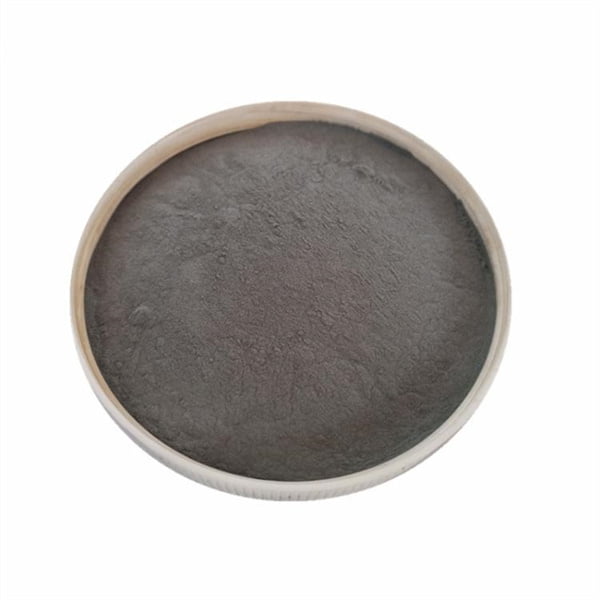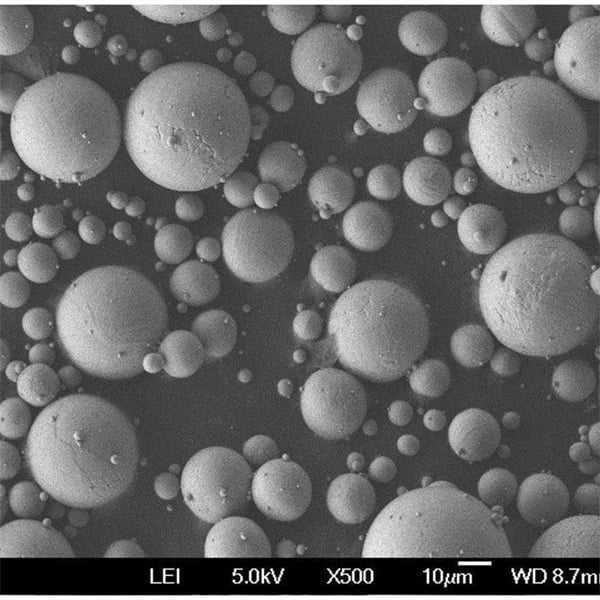3D Printing Metal Powders:Raw Materials for Mechanical Alloying
Obsah
Imagine a world where complex metal parts materialize from a digital blueprint, layer by layer, with intricate details and exceptional strength. This futuristic vision is becoming a reality thanks to the magic of 3D printing. But just like any masterpiece, a successful 3D tiskový kovový prášek object starts with the right foundation – the raw materials. In this article, we’ll delve into the fascinating world of mechanical alloying, a technique used to create the perfect blend of ingredients for remarkable 3D printing outcomes.

Selection of Raw Materials for Mechanical Alloying
Just as a chef carefully selects their ingredients for a gourmet meal, choosing the right raw materials is crucial for successful mechanical alloying in 3D Printing Metal Powder. Here’s a breakdown of the key players:
1. Metal Powders: These are the stars of the show, forming the base material for the final printed object. They need to possess specific characteristics:
- Velikost a distribuce částic: Imagine a smooth beach versus a rocky terrain – that’s the difference between desired and undesired particle size distribution. Ideally, the particles should be fine and uniformly sized to ensure consistent flow and precise layering during printing.
- Morfologie částic: Picture smooth, spherical balls versus jagged, irregular shapes. Sférické částice offer better flowability, packing density, and ultimately, superior print quality compared to their irregularly shaped counterparts.
- Chemické složení: Purity matters! The metal powders used in mechanical alloying should be of high purity to avoid introducing unwanted elements that could compromise the final product’s properties.
2. Additives: These are the supporting actors, playing a crucial role in enhancing the performance of the metal powders
- Binders: Imagine glue holding sand together in a sandcastle. Binders act similarly, improving the flowability and packing density of the metal powders during the printing process. Once the printing is complete, the binders are typically removed through a subsequent heat treatment.
- Porosity Control Agents: Think of tiny air pockets in bread dough. Porosity control agents help minimize the formation of pores within the printed object, leading to denser and ultimately, stronger parts.
- Lubricants: Friction can be a real drag, even in the microscopic world of metal powders. Lubricants help reduce friction between the particles, ensuring smooth and efficient powder flow during printing.
3. Alloying Elements: These are the secret ingredients, used to modify the properties of the final material. By carefully selecting and adding specific elements, manufacturers can tailor the printed object’s characteristics, such as:
- Strength and Hardness: Imagine a delicate teacup versus a sturdy iron skillet. Adding specific alloying elements can significantly enhance the strength and hardness of the printed metal.
- Odolnost proti korozi: Think of a rusty car versus a gleaming chrome bumper. Certain alloying elements can significantly improve the material’s resistance to corrosion, making it suitable for harsh environments.
- Elektrická vodivost: Picture the difference between a wooden spoon and a copper wire. By carefully choosing alloying elements, manufacturers can control the electrical conductivity of the printed object, making it suitable for various electronic applications.

Here are 10 specific metal powder examples commonly used in mechanical alloying for 3D tiskový kovový prášek, along with their key characteristics:
| Model kovového prášku | Složení | Klíčové vlastnosti | Aplikace |
|---|---|---|---|
| Nerezová ocel 316L | Fe-18Cr-10Ni-2Mo | Vysoká odolnost proti korozi, dobré mechanické vlastnosti | Aerospace, medical implants, chemical processing equipment |
| Inconel 625 | Ni-20Cr-9Mo-4Fe | Excellent heat and corrosion resistance, good high-temperature strength | Lopatky turbín, součásti raketových motorů, výměníky tepla |
| Ti-6Al-4V | Ti-6Al-4V | Vysoký poměr pevnosti a hmotnosti, dobrá biokompatibilita | Letecké komponenty, lékařské implantáty, sportovní zboží |
| Hliník 6061 | Al-Mg-Si | Lightweight, good machinability, good corrosion resistance | Automotive parts, electronics enclosures, consumer goods |
| Měď | Cu | Vynikající elektrická vodivost, dobrá tepelná vodivost | Heat sinks, electrical conductors, printed circuit boards |
| Nikl | Ni | Good corrosion resistance, good ductility | Electrical components, catalysts, chemical processing equipment |
| kobalt-chrom (CoCr) | Co-Cr | Vysoká odolnost proti opotřebení, biokompatibilní | Medical implants, dental prosthetics, wear-resistant components |
| Hastelloy C-276 | Ni-Mo-Cr-W | Excellent corrosion resistance, high-temperature strength | Chemical processing equipment, oil and gas industry components, pollution control equipment |
| Wolfram | W | High melting point, high density, good wear resistance | Armor piercing ammunition, cutting tools, rocket engine nozzles |
| Maraging Steel | Fe-Ni-Mo-Cr | High strength, good ductility, good toughness | Aerospace components, firearms, golf clubs |
Selection of Raw Materials
The quality and selection of raw materials play a critical role in determining the success of the mechanical alloying process and the final 3D Printing Metal Powder object. Here’s how:
- Particle size and morphology directly impact flowability and packing density. Poor flowability can lead to inconsistencies in the printed layers, compromising the dimensional accuracy and surface quality of the final object.
- The chemical composition of the metal powder and any added elements influence the final properties. For example, the presence of impurities can weaken the material, while specific alloying elements can enhance its strength, corrosion resistance, or other desired characteristics.
- The selection of binders and lubricants affects printability and the final surface finish. The wrong binder can lead to delamination (separation of layers) or difficulty removing the binder after printing. Similarly, inadequate lubrication can cause friction issues, hindering smooth powder flow and potentially damaging the printing equipment.
In essence, the right combination of raw materials acts as the foundation for a successful 3D printing experience. By carefully selecting and optimizing each component, manufacturers can unlock the full potential of mechanical alloying and create high-quality, functional metal parts.
Comparison of Different Raw Material Options and their Advantages and Limitations
Choosing the right raw materials for mechanical alloying involves carefully weighing the advantages and limitations of each option:
Kovové prášky:
- výhody: Wide variety of materials available, allowing for diverse applications; Can be precisely controlled for specific properties.
- Omezení: Cost can be higher compared to other manufacturing methods; Powder handling can be challenging and requires careful control to avoid contamination.
Additives:
- výhody: Improve printability and final part quality; Can be tailored to specific applications.
- Omezení: Can add complexity to the process; May introduce unwanted elements that need to be removed later.
Alloying Elements:
- výhody: Allow for precise control of the final material properties; Can create unique combinations not achievable with traditional manufacturing methods.
- Omezení: Can significantly increase the cost and complexity of the process; May require specialized expertise and equipment to handle.
the Future of Raw Materials for Mechanical Alloying 3D tiskový kovový prášek
The future of mechanical alloying in 3D Printing Metal Powder is brimming with exciting possibilities. Here are some key trends to watch:
- Development of new and improved metal powders: Researchers are constantly striving to create metal powders with tighter size distribution, improved morphology, and even finer particle sizes for even greater detail and resolution in printed parts.
- Exploration of novel alloying elements: The introduction of new elements and the exploration of their combinations hold immense potential for creating materials with unique properties, pushing the boundaries of what’s achievable with traditional manufacturing methods.
- Sustainable and environmentally friendly materials: As sustainability concerns rise, the development of eco-friendly metal powders and biodegradable binders is gaining traction, paving the way for a more responsible and sustainable future for 3D printing.
The selection of raw materials plays a pivotal role in the success of mechanical alloying 3D printing. By understanding the different options, their properties, and their impact on the final product, manufacturers can unlock the full potential of this revolutionary technology and create high-quality, functional metal parts for diverse applications.

FAQ
Q: What are the benefits of using mechanical alloying for 3D tisk kovových prášků?
A: Mechanical alloying offers several advantages, including:
- The ability to create unique and tailored material properties: By carefully selecting and combining different metal powders and alloying elements, manufacturers can create materials with specific characteristics not achievable with traditional manufacturing methods.
- Improved powder quality and printability: Mechanical alloying can help refine the powder particles, leading to improved flowability, packing density, and ultimately, better print quality.
Q: What are some of the challenges associated with using mechanical alloying for 3D printing metal powders?
A: While offering significant benefits, mechanical alloying also presents some challenges:
- Složitost procesu: Compared to traditional powder production methods, mechanical alloying can be a more complex and time-consuming process, requiring specialized equipment and expertise.
- Úvahy o ceně: The cost of raw materials, particularly high-purity metal powders and specific alloying elements, can be higher compared to other 3D printing techniques.
- Kontrola kvality: Maintaining consistent powder quality and ensuring minimal contamination throughout the process requires rigorous control measures.
Q: What are the typical applications of mechanical alloying 3D printing?
A: Mechanical alloying 3D printing finds application in various industries due to its ability to create high-performance metal parts with unique properties. Here are some examples:
- Letectví: Manufacturing lightweight and high-strength components for aircraft, satellites, and spacecraft.
- Lékařské implantáty: Creating customized implants with biocompatible materials for knees, hips, and other body parts.
- Automobilový průmysl: Developing custom-designed parts for engines, transmissions, and other automotive components.
- Elektronika: Producing intricate components for heat sinks, electrical connectors, and printed circuit boards.
- Tooling and machinery: Creating wear-resistant and high-precision tools for various industrial applications.
Q: How does the future of mechanical alloying 3D printing look?
The future of mechanical alloying 3D printing is promising, with several exciting developments on the horizon:
- Advancements in automation: Increased automation can streamline the process, reduce costs, and improve consistency in powder production.
- Sustainability focus: The development of eco-friendly materials and processes will be crucial for a more sustainable future of 3D printing.
- Emerging applications: As the technology matures and costs decrease, we can expect to see mechanical alloying 3D printing applied in new and innovative ways across various industries.
In conclusion, the selection of raw materials plays a critical role in the success of mechanical alloying 3D printing. By understanding the different options, their properties, and their impact on the final product, manufacturers can unlock the immense potential of this technology and contribute to its continued development and diverse applications in the years to come.
Sdílet na
MET3DP Technology Co., LTD je předním poskytovatelem řešení aditivní výroby se sídlem v Qingdao v Číně. Naše společnost se specializuje na zařízení pro 3D tisk a vysoce výkonné kovové prášky pro průmyslové aplikace.
Dotaz k získání nejlepší ceny a přizpůsobeného řešení pro vaše podnikání!
Související články
O Met3DP
Nedávná aktualizace
Náš produkt
KONTAKTUJTE NÁS
Nějaké otázky? Pošlete nám zprávu hned teď! Po obdržení vaší zprávy obsloužíme vaši žádost s celým týmem.

Kovové prášky pro 3D tisk a aditivní výrobu
SPOLEČNOST
PRODUKT
kontaktní informace
- Město Qingdao, Shandong, Čína
- [email protected]
- [email protected]
- +86 19116340731

















